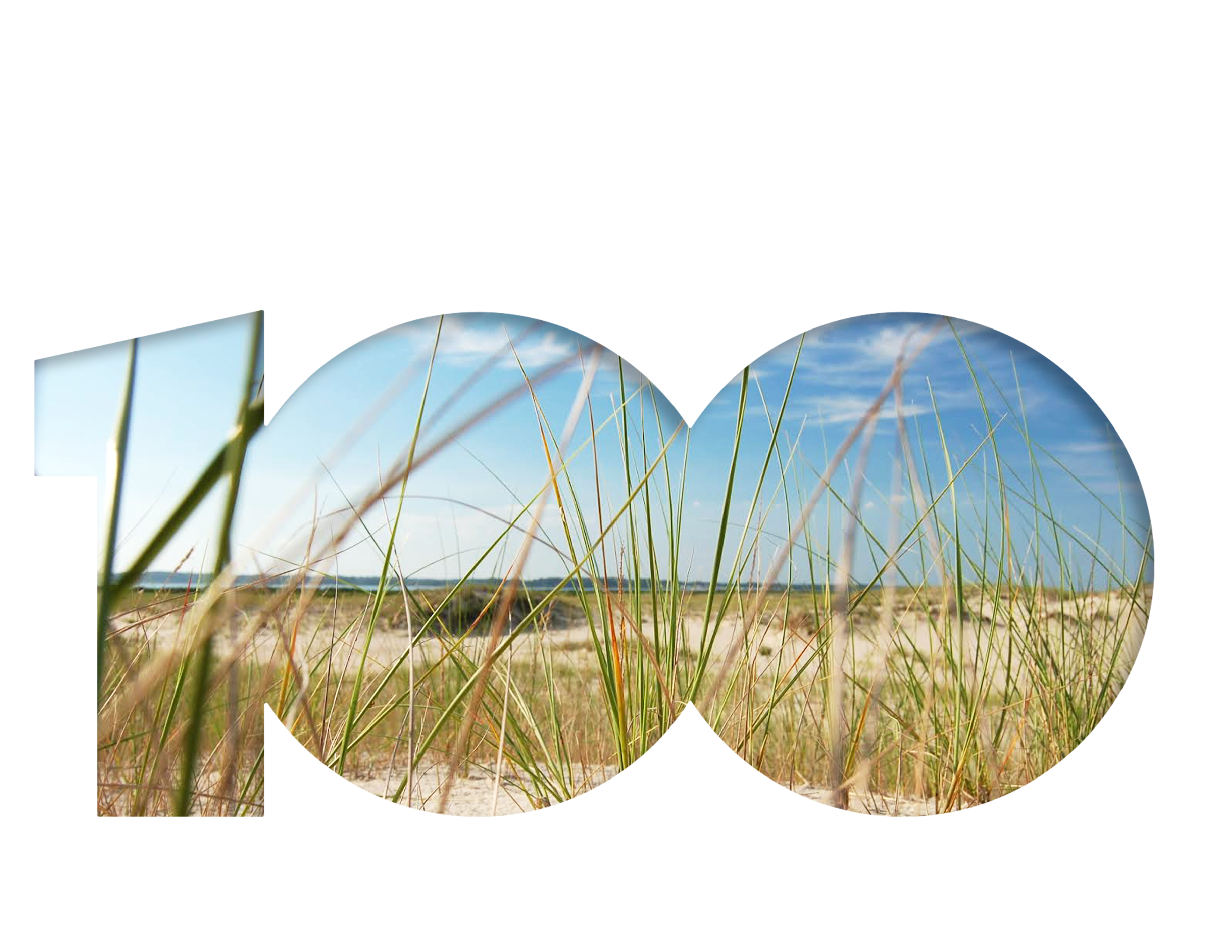My Introduction to Chesapeake Bay
Joe Edgerton ·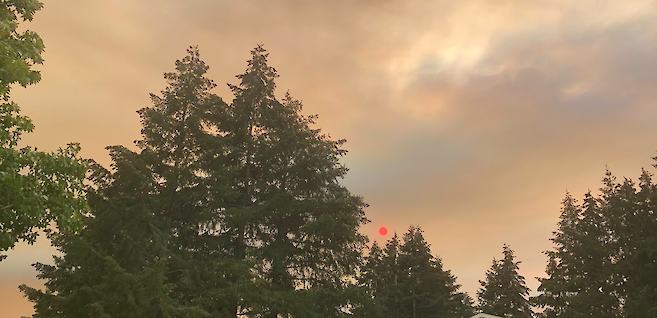
The air was so thick with smoke that the daylit sky always looked like a sunset. Through the smoke, the sun appeared to glow red and everything else was dimmed in a hazy shadow. I couldn’t believe that my hometown looked so different now. At this point, between the pandemic and the faraway fires but ever-present smoke, I thought about what the rest of the country was experiencing. Thankfully I could reach out to my co-workers across the country and find out.
It was towards the end of the 2020 summer and I had started my science communication internship with the Integration and Application Network. I was teleworking from my parents house in Portland, Oregon all the way across the country to both sides of the Chesapeake Bay, in Annapolis and Cambridge, Maryland. I never had an opportunity like this before, a new timezone, new co-workers who I would not get to meet face-to-face for some time, and a new area of the country that I was more or less completely unfamiliar with (if I had to guess, I would have said Baltimore was the capital of Maryland). It was a lot to take in for someone who had barely left his hometown in Oregon.
Gradually and remotely, I was introduced to the East Coast and to one of the most iconic bodies of water on the East Coast—Chesapeake Bay. I had heard about the Bay before from classes and from general media, but I didn’t know how extensive it was, what animals lived there, or the history of it. To support my acclimation to East Coast topics, my family bought me a poster of Chesapeake Bay so I could reference locations that people at work would talk about. Between the poster and google, I started to get a rough, two-dimensional picture of Chesapeake Bay and the surrounding areas.
As my internship progressed over the next several months, I became more interested in Chesapeake Bay—on both a professional and personal level. I was working on Chesapeake Bay projects that gave me insight into the environmental situation of the Bay. Additionally, every day I listened to my co-workers as they discussed weather patterns and travel destinations around the Bay. To me, it seemed as though the Bay had endless areas to explore and adventures to be had. However, even with this information I still felt left out of the experience. I desperately wanted to go and see it for myself, yet, the COVID-19 pandemic had kept my chance of going to Maryand fairly low for a long period of time.
Finally, in the spring of 2021, after a long wait, my wish to travel didn’t seem so impossible. I was fortunate enough to receive my full vaccination close to the time when travel restrictions were lifted. Soon I began planning my solo trip to meet my co-workers and my state-away-from home in person.
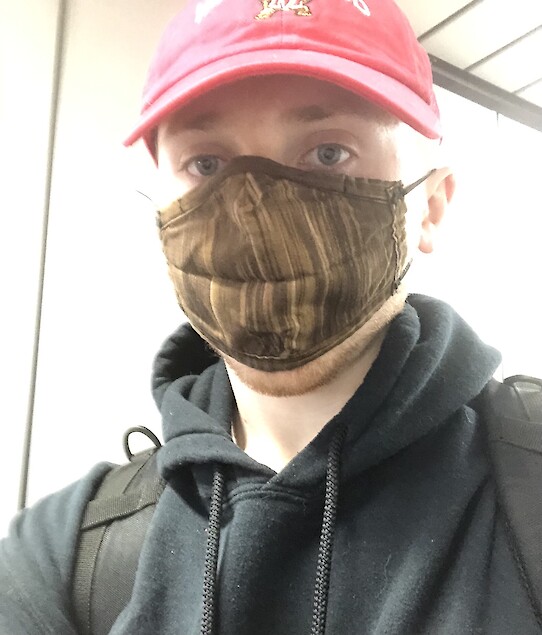
Traveling on my own for the first time was somewhat scary and uncomfortable, but at the same time it gave me a sense of independence. Photo by Joseph Edgerton.
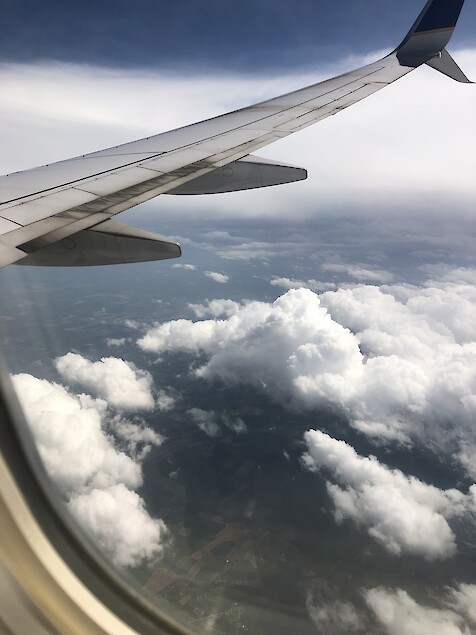
Fast forward to a smooth touchdown in Baltimore, I frantically hurried through the airport to get my luggage and to locate my ride in a sea of cars and people. Within minutes I located the car and simultaneously met my boss in person for the first time since I began this position nine months ago. It was a happy moment for me for two reasons: I thought about how good things do come to those who are patient, but at the same time I also realized how fast change can happen. I am here, on the other side of the country, ready to start a new chapter in my life. After months of hearing and talking about the Chesapeake Bay I will get to work just one minute away from it! Now all I need are some excuses to see it, which didn’t take long to find.
Soon after arriving in Annapolis, I was able to see Chesapeake Bay for the first time, albeit from a distance. I was in the car of a coworker as I looked out of my passenger window and saw the approaching Bay Bridge. Wow, what a sight it is to see the entire span of the Bay dotted with small to freight-sized vessels traveling underneath the bridge. I would be lying if I didn’t say I was slightly intimidated by the height of the bridge (perhaps akin to a small roller coaster ride). It was certainly fun going across the bridge for the first time, and ever since then I have enjoyed every trip across the bridge that I have made—I think I always will.
My next encounter with the Bay was not as direct as with the bridge, more of an “acquired taste” kind of experience. Old Bay Seasoning was this new and distinct flavor for me, whether on tacos or potato chips it was now a staple spice mix that I would seek out in future dishes. I count this seasoning as one of my “Bay” experiences, and hopefully I will get to have more chances to try it out on some seafood dishes.
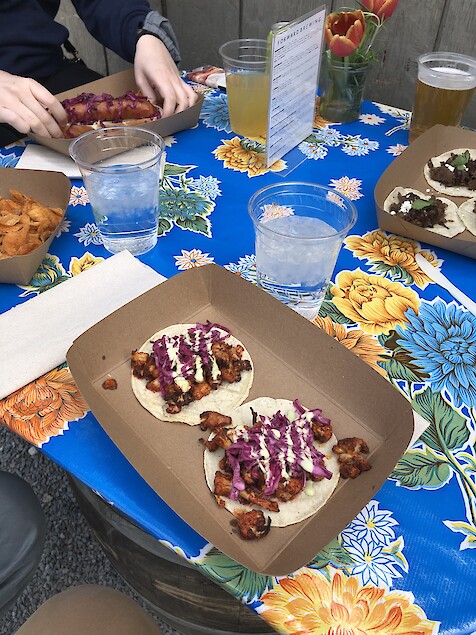
Lastly, my most direct encounter with the Bay was one that was both engaging and lasting. Twice I got to go out on the water near Cape St. Clair and go fishing for the first time in years. The first trip yielded a couple catches, I was able to snag some small perch that we put back into the Bay.
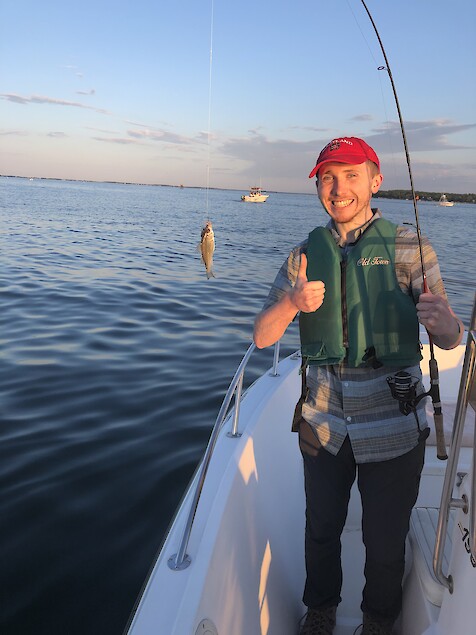
More importantly, I was able to hone my botany skills during that trip so I could catch a whopping 1 lb twig (totally exaggerating, probably closer to half a pound).
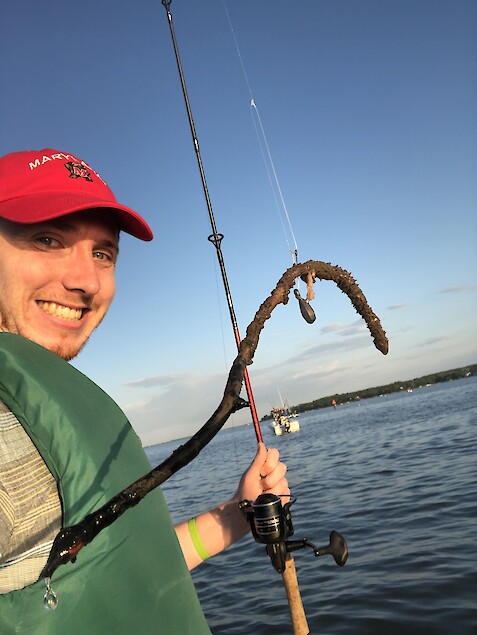
On the more serious side of events, the second fishing trip yielded an unexpected surprise. One cast of my rod started as a strong bite at the end of my line, then it quickly transitioned into an arduous fight between myself and an unknown animal.
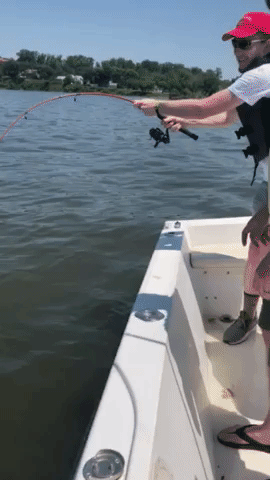
After fifteen minutes of wrangling and anticipation, the unknown catch revealed itself as a cow-nosed ray. I immediately went from feeling a sense of accomplishment to something closer to guilt. We weren’t able to get the ray close enough to remove the hook, so we instead cut the line as close as we could to its mouth. I can’t help but think that I harmed that animal, but I also realize that these things happen.
I got to spend some quality time out on the Bay during these trips. At one point, near the Baltimore Harbour Light, the water was nearly still and no sound could be heard from any direction; dead silence was as eerie as it was peaceful. In another part of the Bay, it was hard to hear each other talk as large, loud speedboats came cruising around the Bay. It seemed like whether you wanted to relax by yourself or show off to everyone around you, the Bay was the spot to do so.
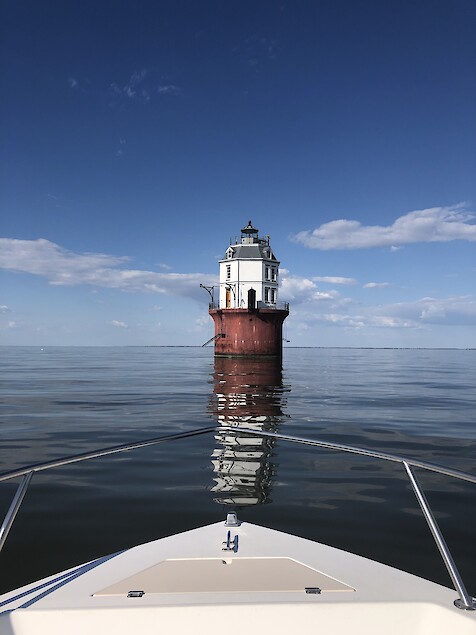
It was nice to interact with the Bay in many ways, yet there was still a lot about the Bay I didn’t know. As I got involved in creating the 2020 Chesapeake Bay Report Card I learned about some of the environmental challenges that the Bay and the people in the Bay watershed face: nutrient loads, protected lands/cultural values, walkability to a park, etc.
From learning more about these challenges and stories of the Bay, I began to understand why it was so critical for the Bay to have its own report card. Many people depend on this waterbody for food, income, and recreation. This is a place that I have now developed a vested interest for; everytime I work with the data and hear the issues surrounding the Bay and the watershed, it inspires me to promote and protect the socio-environmental health of it.
After my long journey to the Bay I ultimately found that it's not the destination that is exciting, it’s the people you spend time with along the way. I’m amazed at the number of wonderful people I have met so far in my endeavors to experience the Bay; I hope that amazement doesn’t end anytime soon.
The irony in all of this is that I started my journey leaving an orange, hazy sky behind, only to find another one at the end of my journey; however this time, I had some new friends to share it with.
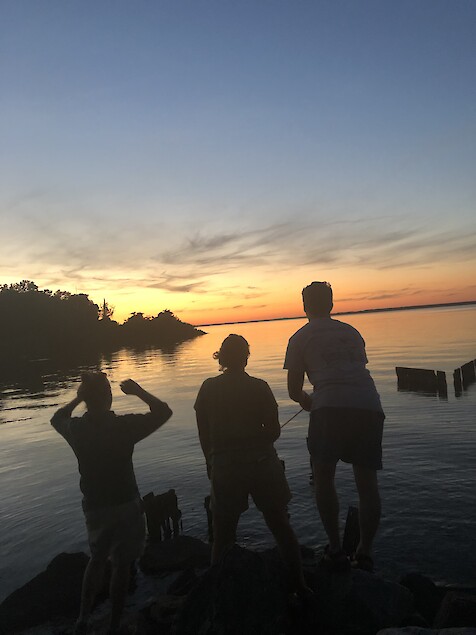
About the author
Joe Edgerton

Joseph Edgerton is an Assistant Science Communicator for the Integration and Application Network (IAN) within the University of Maryland Center for Environmental Science. Joe graduated from Oregon State University with a B.S. in biology in 2019. After undergrad, he became increasingly interested in data visualization and communication. Formally an IAN intern, he continues to assist IAN team members with designing science communication products, engaging stakeholders, and working with data. Joe enjoys travelling to nature parks, working with all things R code, and having “decent” hacky sack skills.

